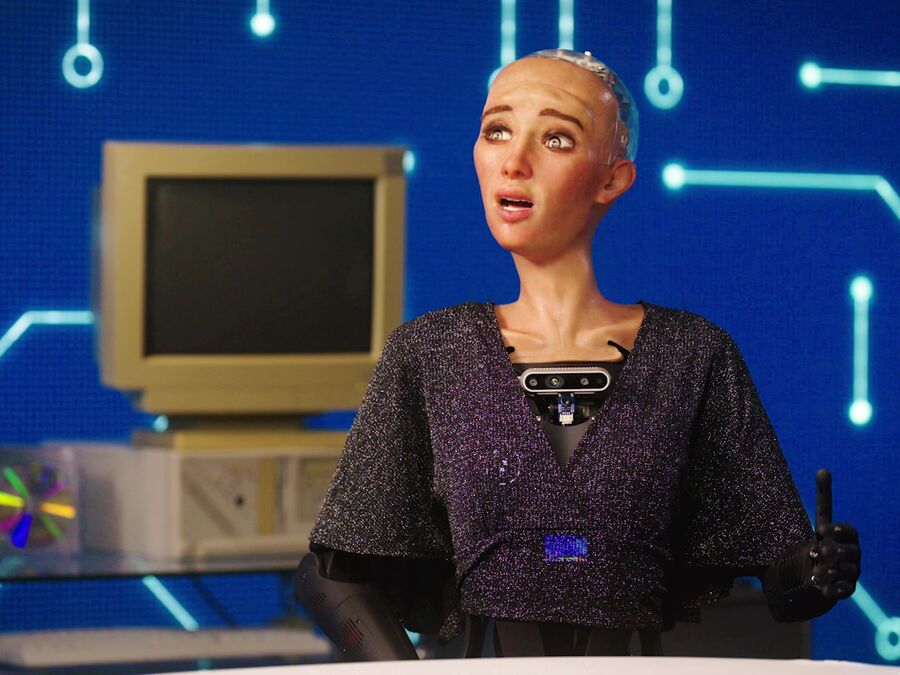This article is more than
1 year oldHumanoid Robots With Artificial Intelligence Have a Long Way to Go

Elon Musk, Masayoshi Son and other tech leaders have bet on a future that includes human-like robots, but building this technology is challenging, expensive and of questionable benefit, according to an expert in robotics and artificial intelligence.
“It's incredibly difficult to make genuinely convincing humanoid robots,” said Kate Devlin, author of Turned On: Science, Sex and Robots, about our relationship with technology. “It's financially expensive to build these, and they don't really work all that well.”
Devlin made the remarks during an interview for the latest episode of the Bloomberg Originals serie AI IRL, available to stream now.The tech industry has long taken a page from science fiction in thinking up new products. Robots that look like humans are a staple of everything from Star Trek’s Data to Blade Runner’s Rachael. But making a real humanoid robot—let alone one that’s commercially viable—is extraordinarily difficult. More common are the robotic arms and flat machines with wheels rather than legs that you might see in Amazon.com Inc.’s warehouses.
Still, some businesses are investing in the technology. Musk’s Tesla Inc. recently posted a video showing its humanoid robot prototype dancing to electronic music beneath flashing lights. The Atlas robot made by Hyundai Motor Co.’s Boston Dynamics can perform back flips. And GXO Logistics Inc. is testing a humanoid model at a warehouse facility in Georgia.
“Robots, of course, have a use in many, many circumstances,” Devlin said. “A lot of them are designed to be used for tasks that are dull, dirty, dangerous. But then when it comes to the social side of things, is it that compelling to have a body?”
Some companies have struggled to find a market for humanoid robots. In 2014, SoftBank Group Corp. introduced Pepper, a robot capable of expressing human-like body language, maintaining eye contact and engaging in limited small talk, but it never caught on. SoftBank suspended production of the robot several years later.
However, David Hanson, founder of Hong Kong-based Hanson Robotics, said the use of a human form can help in education and academia. His company’s flagship machine, called Sophia, has been exhibited for years at conferences and events around the world.
“The robots are research platforms,” he said in an interview. “Sophia and her kin robots have been in science museums, which have excited kids about science. It's a powerful platform for research, but also for exploring what AI and robots can be to people through artistic expressions.”
Keywords
Newer articles
<p>Chinese officials say they "firmly oppose" the platform being divested.</p>
Ukraine ‘will have a chance at victory’ with new US aid, Zelenskyy says
Congress passes bill that could ban TikTok after years of false starts
Ukraine war: Kyiv uses longer-range US missiles for first time
How soon could US ban TikTok after Congress approved bill?
TikTok faces US ban as bill set to be signed by Biden
‘LOSING CREDIBILITY’: Judge explodes at Trump lawyers as case heats up
Claim rapper ‘made staff watch her have sex’
KANYE WEST PLANS TO LAUNCH 'YEEZY PORN' ... Could Be Coming Soon!!!
Trump lawyer tells SCOTUS that president could have immunity after ordering military to assassinate a political rival
